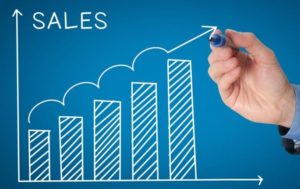Success Story – Predictive B2B Sales Modeling (Part 2)

Before we get deeper into the principles of Predictive Modeling, let me tell you a real life story.
Pat paced the office, full of energy. He and his partners were in the growing global cell phone industry, with a B2B software product that could prove to be really popular. Could he confirm marketability in his role as Sales Director? He saw lots of opportunity. Indeed he knew his startup could become a global player. Cell phones were being adopted by the tens of millions, and cell networks were constantly expanding, so network planners needed his type of software tools.
However, he also knew his sales team needed some structure. Selling to businesses, there were several people involved in each buyer organization, with different and often competing agendas. His sales management challenges were many. What exactly were the steps to closing a deal? How should he select his sales team? What sales tools should he provide? When should he hire more people? How could he answer the CFO’s request for an accurate sales forecast?
Although not trained in sales process design, he recognized that there was a “process” to selling, as well as a need for talented and motivated people. The CFO also had an impact. She believed what was needed was a proven structure, and said “Forecast accuracy is vital, and success needs communication within a company, and a common language to define funnel progress… ”
Digital Marketing is here; and Forecasting challenges remain
Even with digital marketing’s astonishing impact, this CFO observation is still true. A buyer’s high level of access to knowledge about our offerings is still just a “front end” to the decision process. All B2B opportunities evolve to a “direct sales” human influence challenge. Buyer companies tend to form a decision committee, either formal or informal. Generally a decision over $10K will lead to formation of this buyer committee, with a classic make up of supporters and opponents. All these decision influencers need dialog and leadership. The results can then be summarized in an “internal proposal” for the buyer organization.
With all this in mind, he and the CFO read our paper on value-based sales process design, and adapted it to their business. He hired people and brought them on board with a tightly scripted “stages of selling” approach. The structure helped. He knew when to hire sales people, how to organize them, and how to motivate them. He was managing multiple moving targets, forecasting and planning where to add talent.
And yet – his forecast accuracy was awesome. So much so that a BoD member complained that “Your data must be cooked!” after 3 successive quarters of forecasting with 100% accuracy. In the fourth quarter he was able to report “Good news, this quarter my forecast accuracy is only 98%!”
Years later. Pat commented that “There is more to a sales cycle than just ‘did we win or lose the deal?’ For the sales people, when they reach the different stages of a good model, they gain confidence as a sales person. Over time, the sales people also grow their confidence by simply succeeding and understanding the sales staging strategy.”
Model Progress, not Probability
The essence of what Pat had done was to increase focus on sales actions that would move situations forward with buyer internal budgeting, and use forecast calculating metrics that were free of bias. In other words, the errors in the forecasting model tended to be random, and cancel each other out. We call this “Predictive Modeling”.
The end game result was positive – Pat grew his sales team from 2 people to 15 people, located around the world, and all using the same consistent sales process focused on “buyer progress” (not confidence). The company was soon the target of an acquisition request, which ended up being successful for Pat and his partners.



Follow Us
Follow us on LinkedIn for updates.